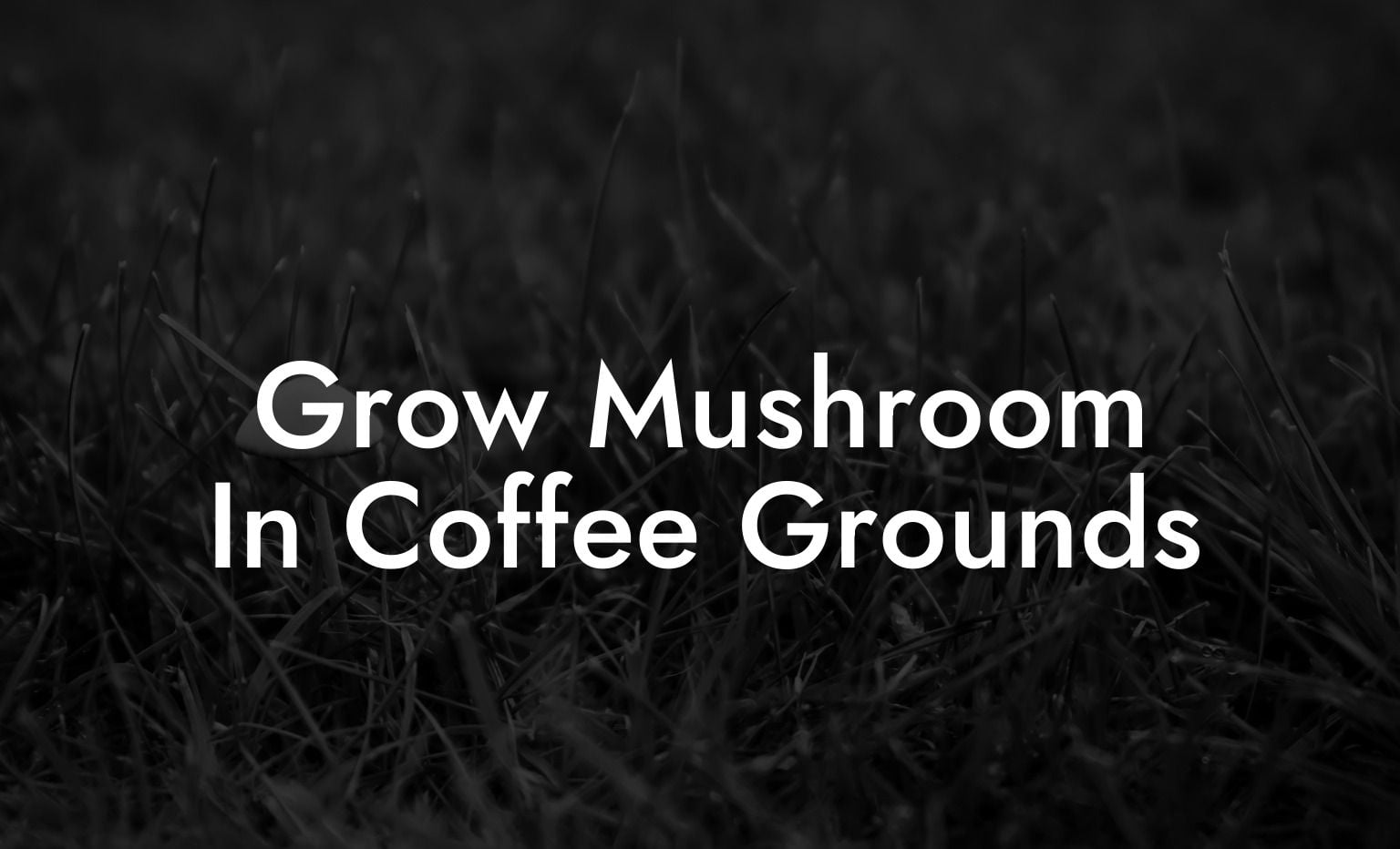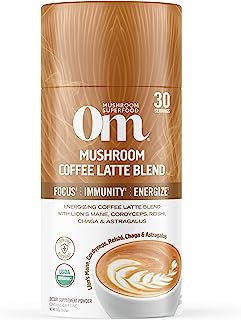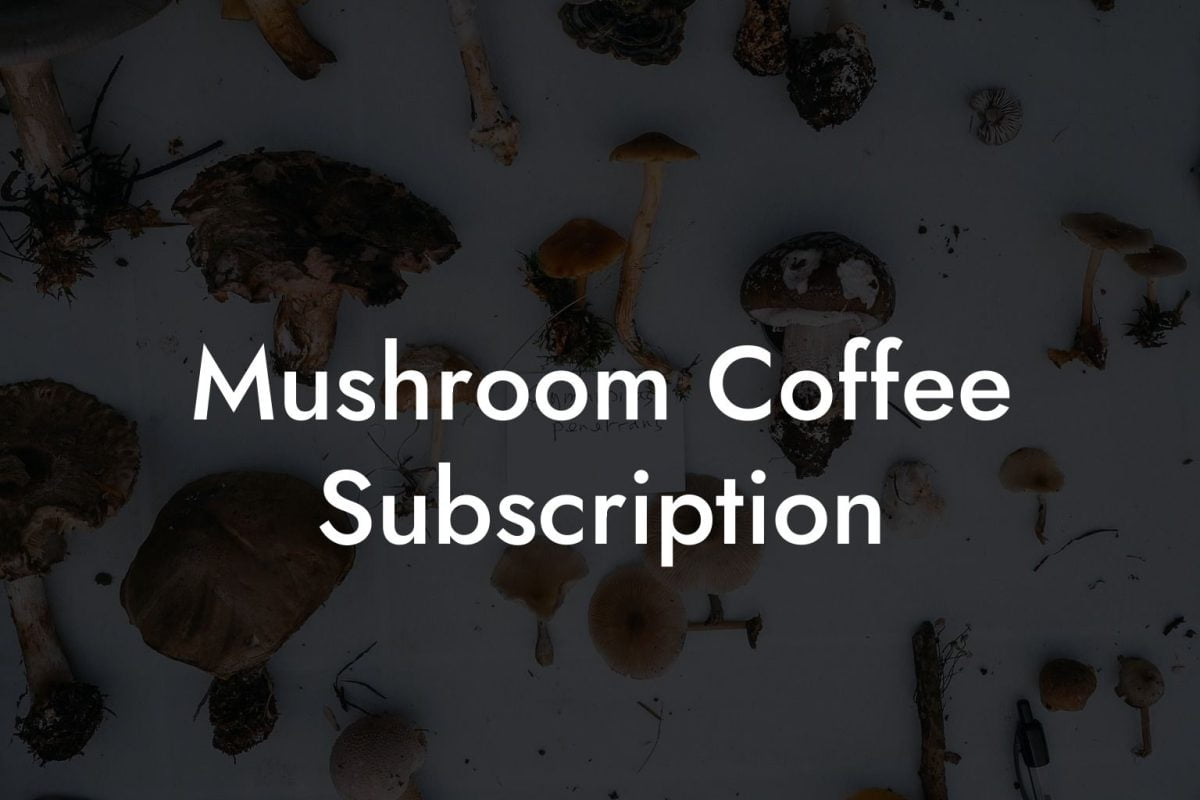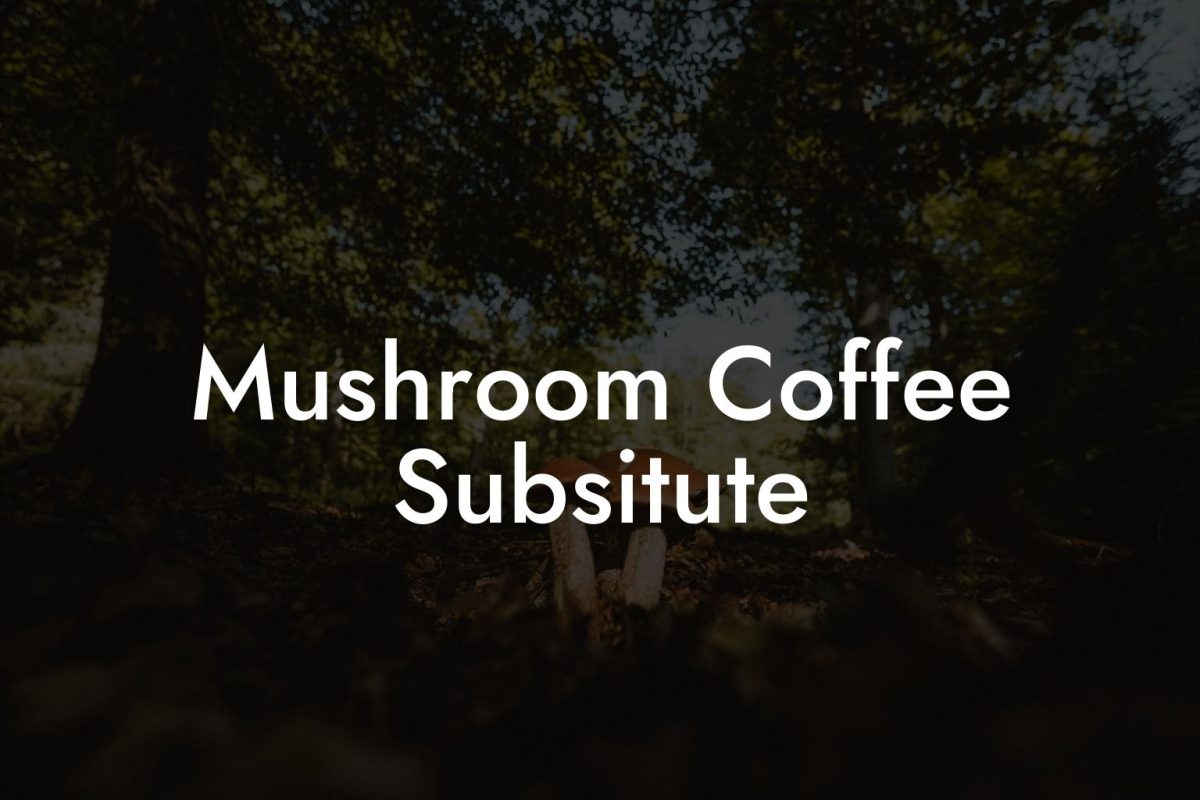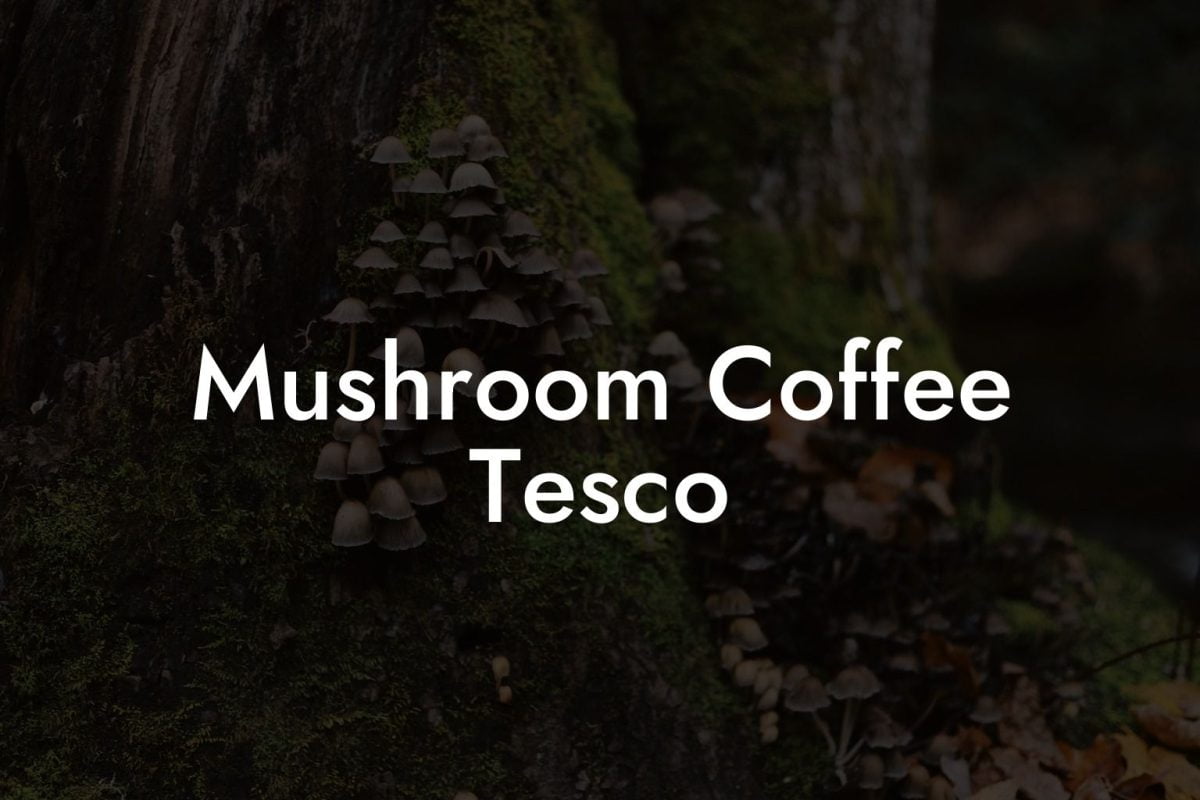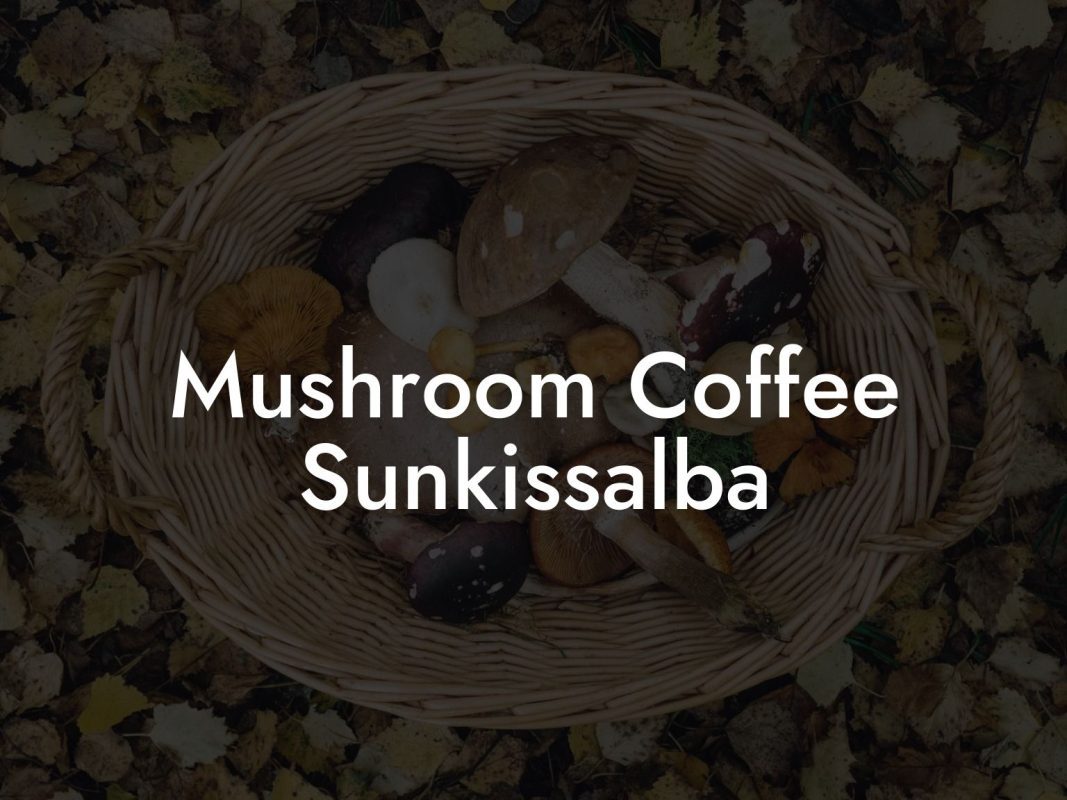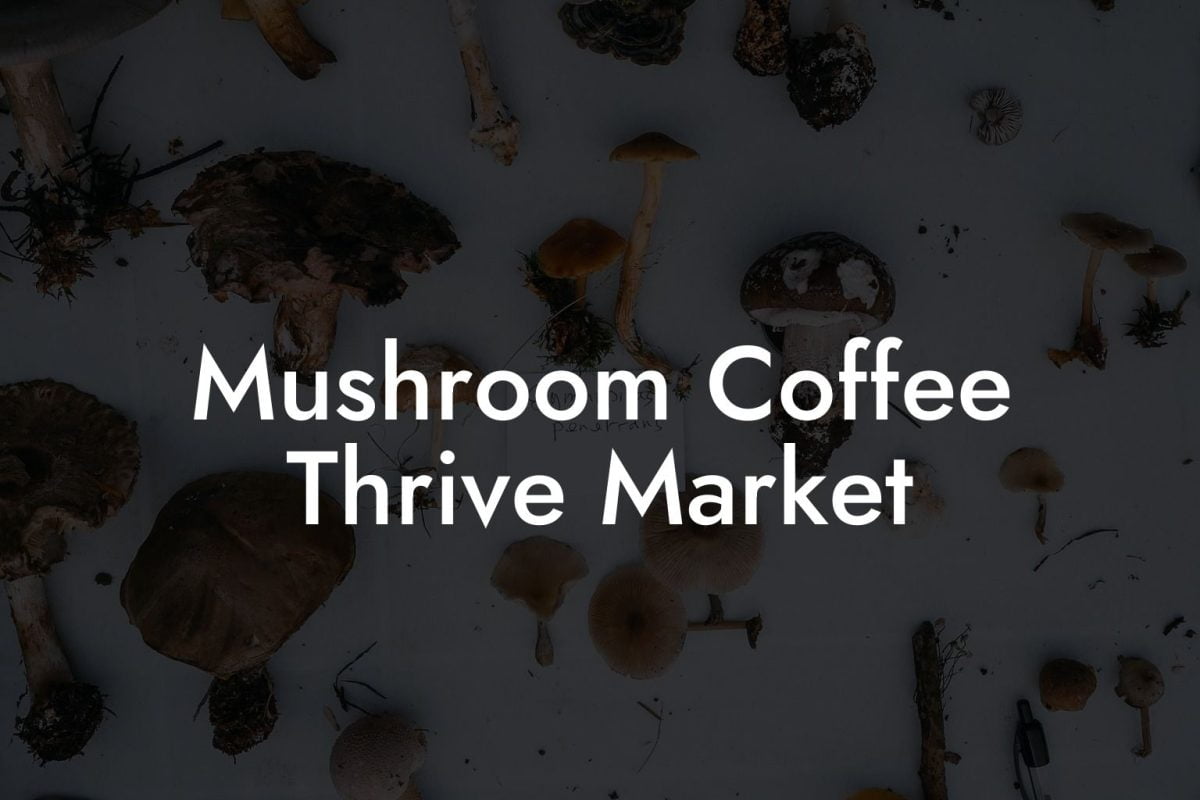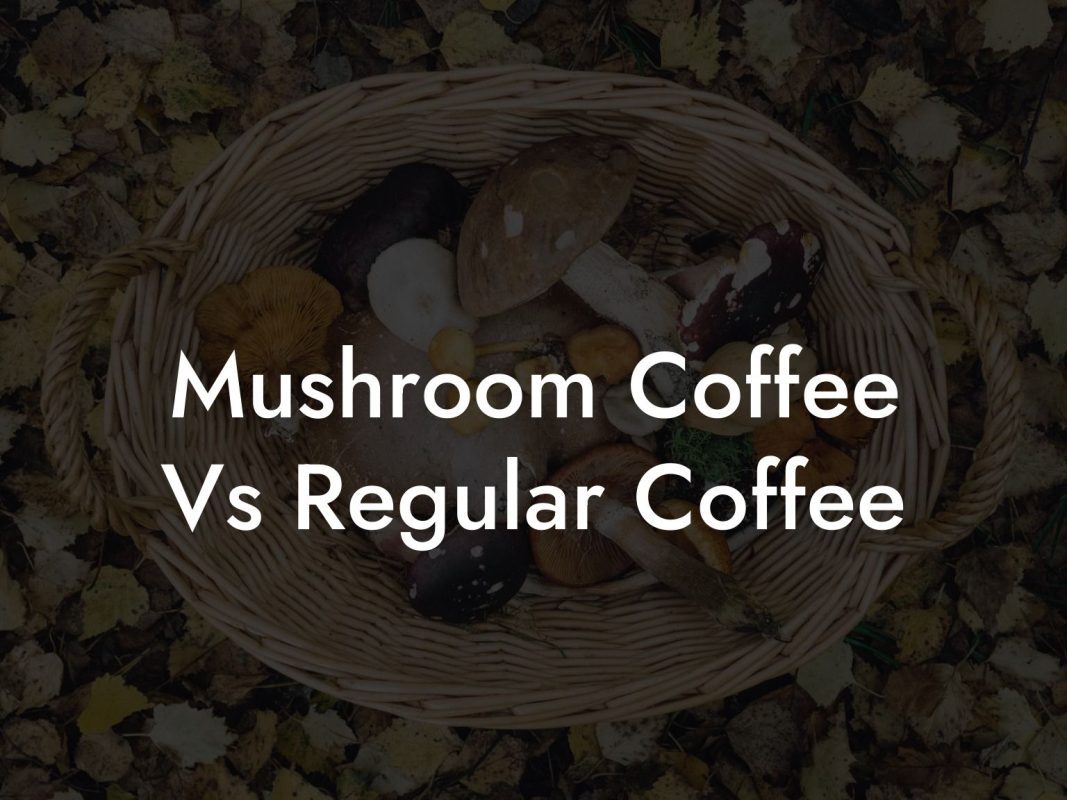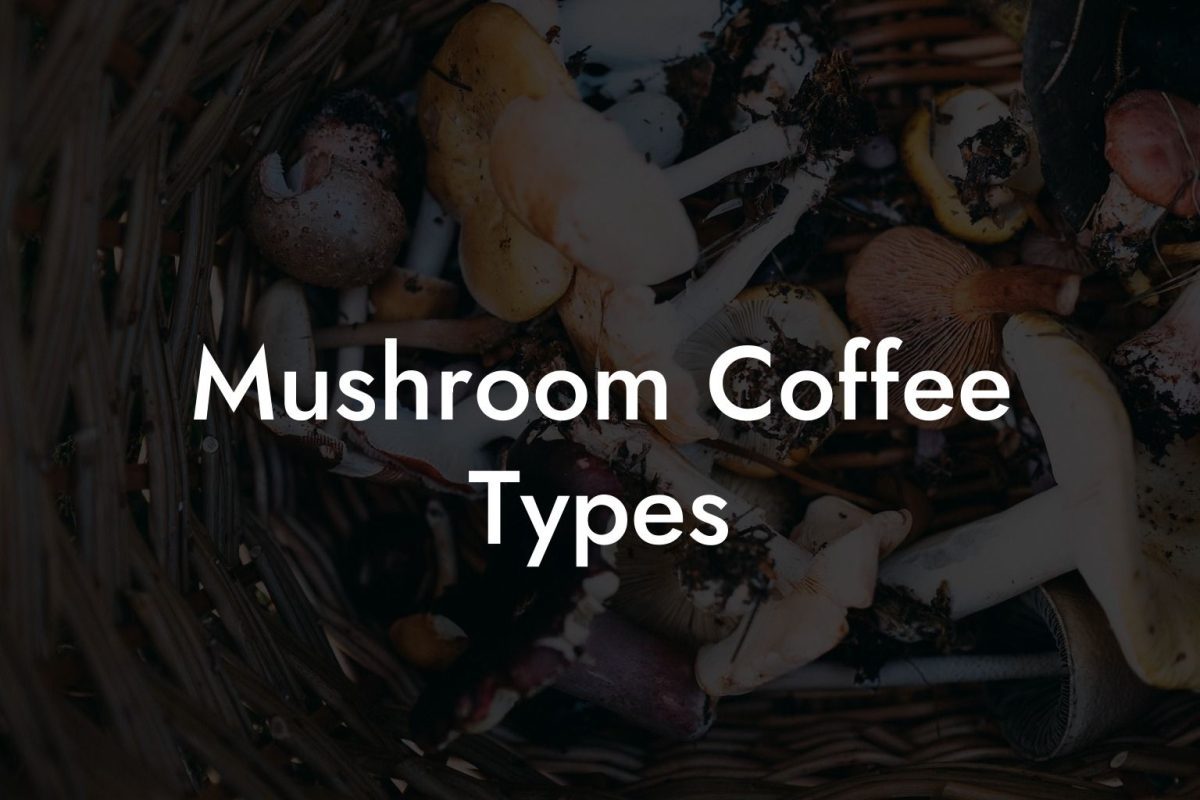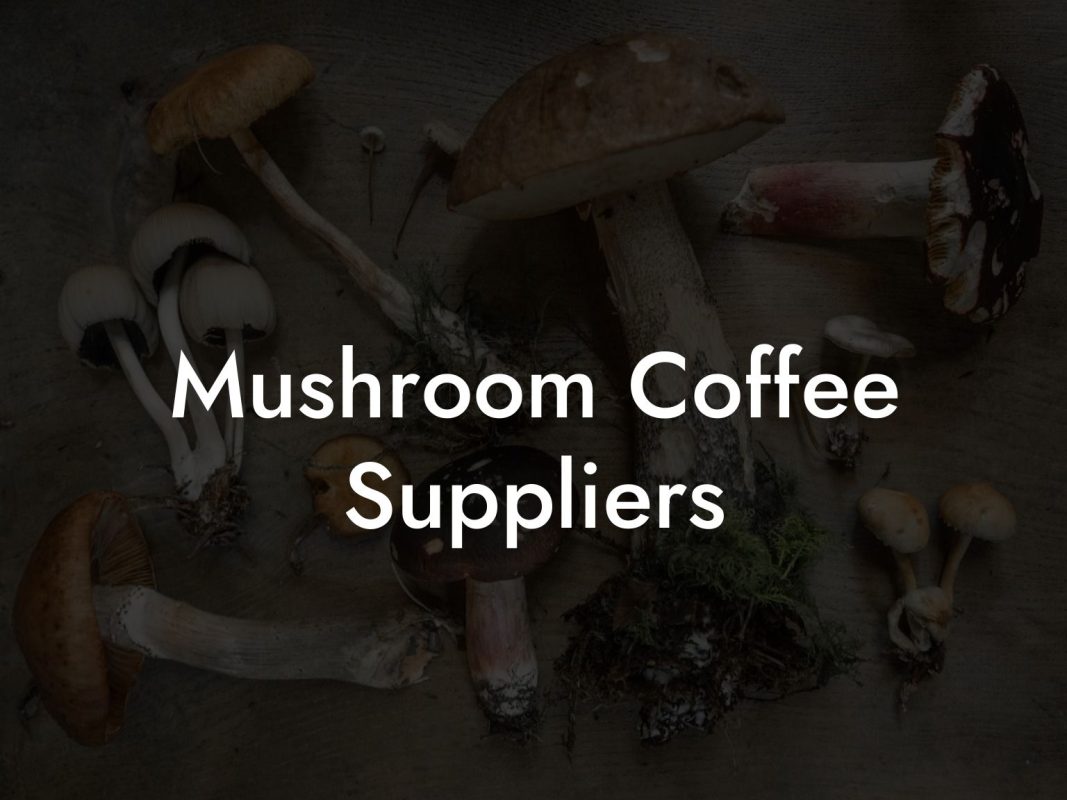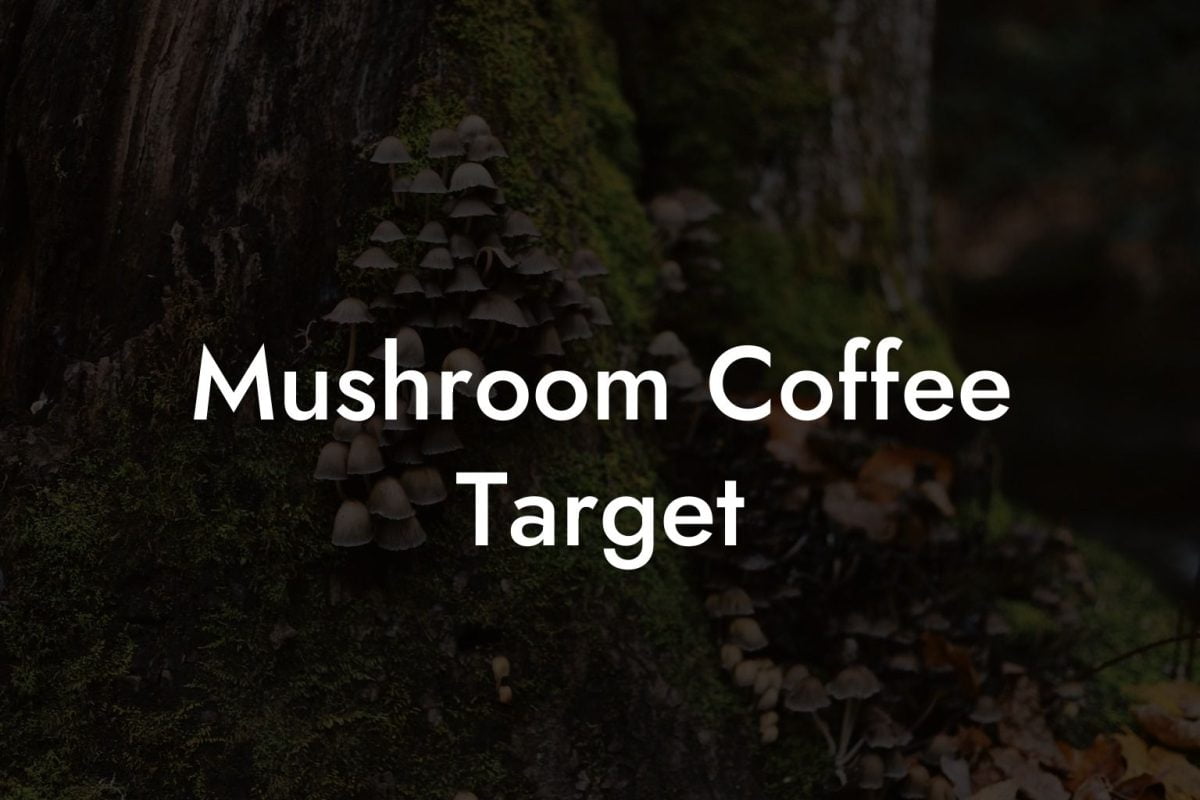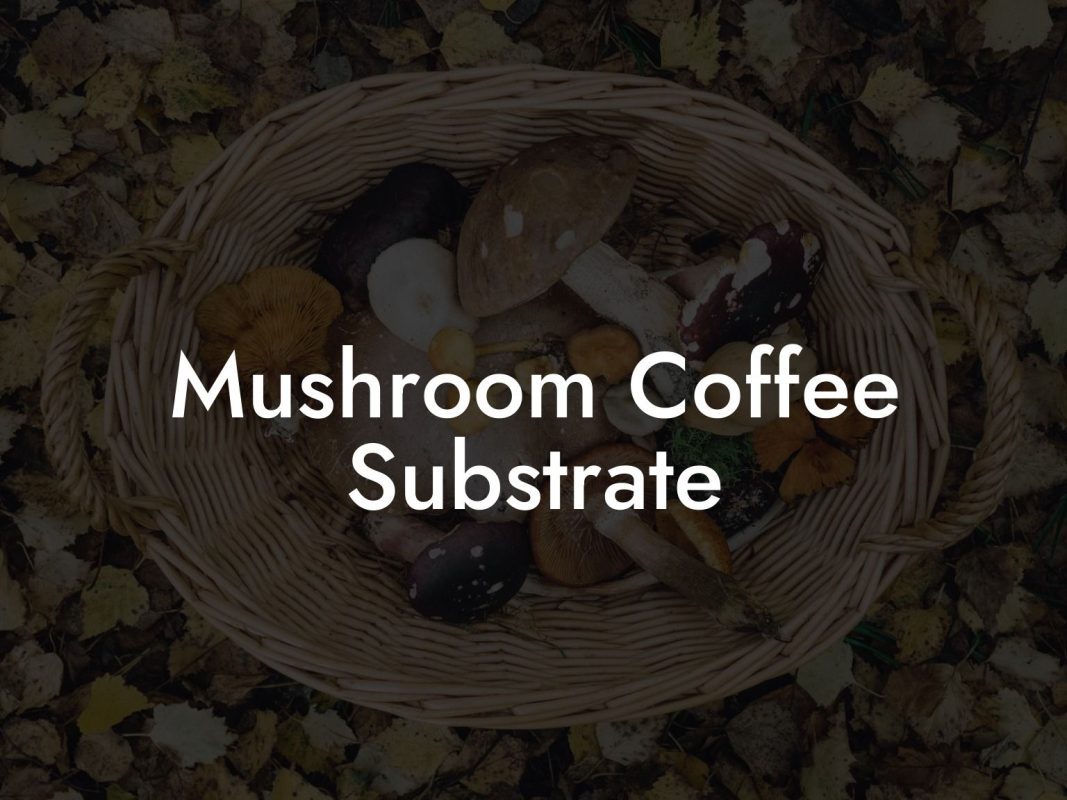Picture this: you’re sipping on your artisanal, ethically sourced mushroom coffee while your very own fungi masterpiece—grown from recycled coffee grounds—is quietly flourishing on your kitchen counter. Welcome to the intersection of eco-innovation and culinary coolness, where sustainability meets a dash of magic. Whether you’re a green-thumbed foodie, a reclaimed waste enthusiast, or simply someone who believes that coffee should do more than just wake you up, this guide is here to show you how to grow mushrooms in coffee grounds. Get ready to embark on a journey that transforms your leftover brew into a bountiful, delicious harvest of mushrooms—and maybe even inspire your next social media post.
Quick Links to Useful Sections
- Why Grow Mushrooms in Coffee Grounds?
- Understanding Coffee Grounds as a Substrate for Mushrooms
- The Best Mushroom Species for Coffee Grounds
- Oyster Mushrooms (Pleurotus ostreatus)
- Shiitake Mushrooms (Lentinula edodes)
- Lion’s Mane (Hericium erinaceus)
- Step-by-Step Guide: How to Grow Mushrooms in Coffee Grounds
- Step 1: Sourcing and Preparing Coffee Grounds
- Step 2: Sterilization and Pasteurization
- Step 3: Inoculation—Introducing the Magic of Mycelium
- Step 4: Incubation—Letting Nature Do Its Thing
- Step 5: Initiation of Fruiting
- Step 6: Harvesting and Enjoying Your Mushrooms
- Tips and Tricks for Successful Mushroom Cultivation
- Sustainability and the Benefits of Mushroom Cultivation in Coffee Grounds
- Exploring the World of Mushroom Coffee
- Real-Life Success Stories: Cultivating Fungal Magic
- The Urban Forager
- The DIY Sustainability Guru
- The Health-Conscious Innovator
- Troubleshooting Common Issues in Coffee Ground Cultivation
- Resources and Community Support: Your Next Steps
- Mushroom Cultivation FAQs: Your Questions Answered
- Your Journey to a Fungal Future Starts Here
Why Grow Mushrooms in Coffee Grounds?
In a world where sustainability is the name of the game, why waste those luscious coffee grounds that most of us casually toss aside? By using spent coffee grounds as a substrate (the nutrient-rich base that mushrooms thrive on), you’re not only minimizing waste but also giving your fungal friends the boost they need to flourish. It’s a win-win situation where Mother Earth and your taste buds bask in the glow of your resourceful ingenuity.
Growing mushrooms in coffee grounds isn’t just an eco-friendly hack—it’s an innovative twist on traditional mushroom cultivation. Millennials and Gen Z alike are all about repurposing everyday items into something extraordinary. Think of it as urban farming with a hip twist, merging science, sustainability, and a dash of DIY flair into one enriching project.
And let’s not forget the obvious benefit: mushrooms are not only a culinary delight but also a powerhouse of nutrition. Packed with vitamins, minerals, and antioxidants, mushrooms grown on coffee grounds can enhance your meals, boost your immune system, and even add a new dimension to your morning cup of mushroom coffee.
Understanding Coffee Grounds as a Substrate for Mushrooms
Before diving into the process, it’s essential to understand why coffee grounds make an ideal substrate for mushroom cultivation. During the brewing process, coffee grounds are left rich in nitrogen and other nutrients that fungi require for growth. These nutrient-dense leftovers create a fertile environment for mycelium—the root-like network that gives birth to mushrooms—to flourish.
Looking For The Best Mushroom Coffee? You'll Love These:
In addition to their nutritional value, coffee grounds have a unique texture that helps with water retention and aeration. This balance ensures that the growing mycelium has just the right amount of moisture without becoming waterlogged—a critical factor for successful mushroom cultivation.
The pH level of coffee grounds is mildly acidic, a condition that many mushroom species find favorable. When combined with other organic waste materials (like sawdust or straw), coffee grounds form a versatile growing medium that can be tailored to various mushroom species.
In essence, recycled coffee grounds aren’t just kitchen waste; they’re nature’s nutrient cocktail waiting for you to unleash their potential. Plus, every batch you grow is a little nod of gratitude to your morning brew.
The Best Mushroom Species for Coffee Grounds
Not all mushrooms are created equal—especially when it comes to growing them in coffee grounds. Some species flourish in this medium better than others, and knowing which ones to choose can spell the difference between a bountiful harvest and a fungal flop.
Oyster Mushrooms (Pleurotus ostreatus)
The undisputed superstar of coffee ground cultivation, oyster mushrooms are known for their rapid growth, resilience, and adaptability. Their delicate, velvety texture and savory flavor make them a popular choice among chefs and home growers alike. Oyster mushrooms thrive in nutrient-rich substrates, and coffee grounds provide just the right balance of moisture and nutrients for these fungi to burst into life.
Shiitake Mushrooms (Lentinula edodes)
While shiitake mushrooms are traditionally grown on hardwood logs, they can adapt quite well to enriched coffee grounds when combined with other organic materials. Their deep, earthy taste and robust nutritional profile offer a gourmet twist to your home-grown produce. Keep in mind that shiitake requires a bit more patience and precise temperature control compared to their oyster counterparts.
Lion’s Mane (Hericium erinaceus)
Looking for a mushroom that’s as unique as it is tasty? Enter Lion’s Mane—a mushroom not only celebrated for its distinctive, shaggy appearance but also for its potential cognitive benefits. Although a bit trickier to cultivate, Lion’s Mane can be grown on coffee grounds with a little extra TLC and the right environmental conditions. Its seafood-like flavor and potential brain-boosting properties make it a hit among health buffs and culinary adventurers alike.
While these three species represent the creme de la creme of coffee ground cultivation, don’t be afraid to experiment. Fungi are wonderfully diverse, and you might discover that your local coffee shop’s secret ingredient is just waiting to transform into an edible treasure.
Step-by-Step Guide: How to Grow Mushrooms in Coffee Grounds
Ready to get your hands a little dirty? Here’s a comprehensive, step-by-step guide to transforming your spent coffee grounds into a mini mushroom farm. Whether you’re a seasoned cultivator or a curious beginner, these instructions will help you make the most of your mushroom-growing adventure.
Step 1: Sourcing and Preparing Coffee Grounds
The journey begins with your coffee grounds. Collect fresh, used coffee grounds from your home or local café (many bars are happy to give them away for free!). Make sure the grounds are as fresh as possible to maintain their nutrient content.
Once collected, allow the coffee grounds to cool to room temperature if they’re still warm from brewing. It’s like letting your favorite band warm up before hitting the stage—timing matters!
Step 2: Sterilization and Pasteurization
While coffee grounds are relatively low in harmful bacteria thanks to the brewing process, it’s still important to minimize any unwanted microbial competition. You can achieve this by pasteurizing the grounds. Place them in a heat-safe container and steam or microwave them for a few minutes. If you’re a perfectionist, consider adding a small amount of water to ensure even heat distribution.
Sterilization is key to allowing your desired mycelium to take center stage without interference from mold or other contaminants. Remember: in the world of mushroom farming, cleanliness isn’t just next to godliness—it’s absolutely crucial.
Step 3: Inoculation—Introducing the Magic of Mycelium
Now comes the exciting part: inoculating your coffee grounds with mushroom spawn (the mycelium-infused “seeds” of mushroom cultivation). Spread the cooled, sterilized coffee grounds in a clean container (a plastic tote or large jar works well) and evenly mix in your mushroom spawn. Make sure to wear gloves and follow sterile techniques to prevent contamination.
This is where the real magic begins—the spawn will start colonizing the substrate, eventually forming an interconnected network of mycelium that looks like a miniature version of a cosmic web. Trust us, it’s as mesmerizing as those trippy visuals from your favorite indie film.
Step 4: Incubation—Letting Nature Do Its Thing
After inoculation, cover your container with a breathable lid or a layer of cheesecloth to maintain airflow while keeping contaminants out. Place the container in a warm, dark spot (around 70-75°F is ideal) and let the mycelium work its magic. This incubation phase can last anywhere from 7 to 14 days, depending on the species and environmental conditions.
During incubation, your container may develop a white, fuzzy network—a sign that the mycelium is thriving. Keep an eye on it, and don’t worry if you notice a bit of extra moisture; it’s all part of the process. Just be cautious of any strange colors or foul odors, as these could indicate contamination.
Step 5: Initiation of Fruiting
Once the mycelium has fully colonized the coffee grounds, it’s time to trigger the fruiting phase. This is akin to turning the volume up at a concert—the mushrooms are ready to make their dramatic entrance. Move the container to a spot with indirect light, lower the ambient temperature slightly (around 60-65°F), and increase humidity. A DIY humidity tent or regular misting with water works wonders here.
Within a week, you should begin to notice tiny pins (young mushrooms) emerging from the substrate. These pins will gradually mature into full-sized mushrooms, each one a testament to your eco-friendly cultivation skills.
Step 6: Harvesting and Enjoying Your Mushrooms
It won’t be long before your coffee ground mushrooms are ready for the harvest. Gently twist or cut the mushrooms at the base when they reach the desired size. Harvesting at the right time is critical—not only to enjoy the best flavor and texture but also to encourage continued production from the remaining substrate.
After harvesting, rinse your mushrooms lightly if needed and get creative. Whether you’re adding them to a stir-fry, blending them into your morning mushroom coffee, or simply savoring them with a sprinkle of sea salt, every bite is a celebration of sustainable, innovative growing.
Tips and Tricks for Successful Mushroom Cultivation
Even the most dedicated mushroom enthusiasts face challenges—one misstep and your fungal friend might decide to throw a tantrum (in the form of contamination). Here are some insider tips and hacks to help you achieve fungal nirvana:
- Keep It Clean: Always ensure that your hands, tools, and workspace are as sterile as possible. A quick spritz with isopropyl alcohol can be your best friend.
- Monitor the Moisture: Coffee grounds hold moisture well, but too much water can lead to bacterial issues. A well-timed mist or the addition of dry coir (coconut fiber) can help regulate humidity.
- Light and Temperature: Adjusting light conditions and temperature is like DJing at a party—set the mood right and watch your mushrooms groove into bloom. Indirect, ambient light and a slight drop in temperature can kickstart fruiting.
- Use a Hygrometer: Investing in a digital hygrometer can help you ensure that your growing environment stays within the ideal humidity range. Spoiler alert: Most mushrooms love humidity levels of 85-95% during fruiting.
- Experiment and Record: Keep a cultivation journal. Document the type of coffee grounds used, environmental conditions, and the progress of your mushroom growth. It’s an excellent way to learn from each batch and fine-tune your technique.
Remember, every mushroom grower has experienced a flop or two before finding their groove. Celebrate the learning process—it’s all part of the journey to becoming a mushroom cultivation maestro!
Sustainability and the Benefits of Mushroom Cultivation in Coffee Grounds
When you look beneath the surface of growing mushrooms in coffee grounds, you uncover an array of environmental and health benefits that extend far beyond the joy of a harvest.
By utilizing a waste product (spent coffee grounds) as your growing medium, you’re taking a bold step toward reducing landfill waste and promoting a circular economy. This practice contributes to a reduction in industrial waste, encourages sustainable urban farming, and demonstrates that eco-innovation isn’t reserved for high-tech labs—it can happen right in your kitchen.
Moreover, mushrooms are champions of health. They offer a wealth of vitamins, minerals, and antioxidants while potentially boosting immunity and cognitive function. When grown organically in repurposed substrates, these mushrooms carry a story of sustainability and care—a story you can proudly share over brunch or during your next Zoom call.
On a broader scale, mushroom cultivation on coffee grounds represents a shift toward deeper environmental mindfulness, where everyday actions—like disposing of leftovers—can be transformed into small, impactful acts of sustainability.
Exploring the World of Mushroom Coffee
While growing mushrooms on coffee grounds is undeniably innovative, the phenomenon doesn’t stop there. Enter mushroom coffee—a trendy, health-forward beverage that marries the rich, robust flavors of coffee with the earthiness and potential wellness benefits of medicinal mushrooms.
Mushroom coffee is more than just a beverage; it’s a lifestyle choice for those who crave extra vibrancy and balance in their daily grind. By incorporating extracts of potent mushrooms such as Lion’s Mane, Chaga, or Reishi, mushroom coffee aims to support brain function, reduce stress, and enhance overall vitality.
Whether you’re sipping your morning brew to kickstart your day or savoring a warm cup during a cozy evening wind-down, mushroom coffee represents a harmonious blend of tradition and innovation. It’s a drink for the modern, health-conscious consumer who isn’t afraid to experiment and redefine what their daily ritual looks like.
And here’s a fun twist: you can experiment by pairing your home-grown mushrooms with your coffee routine. Try drying and grinding your oyster mushrooms (if you’re feeling extra adventurous) and adding a sprinkle to your blend, transforming your coffee into a one-of-a-kind, superfood-infused elixir.
Real-Life Success Stories: Cultivating Fungal Magic
Sometimes the best inspiration comes from hearing about fellow enthusiasts who have turned their kitchen experiments into thriving mushroom farms. Here are a few real-life success stories that demonstrate the magic of growing mushrooms in coffee grounds:
The Urban Forager
Meet Alex, a savvy urbanite who turned his daily habit of brewing coffee into an eco-friendly project. By collecting spent coffee grounds from local cafes and mixing them with a bit of straw and sawdust, Alex managed to cultivate a steady supply of oyster mushrooms. His small balcony garden not only supplies him with fresh mushrooms but also serves as a conversation starter at every neighborhood potluck.
The DIY Sustainability Guru
Then there’s Mia, a creative DIYer who saw an opportunity in every discarded spoonful of coffee. Passionate about sustainability, Mia repurposed coffee grounds to create a mini mushroom farm right in her apartment. Documenting her journey on social media, she inspired thousands of followers to try their hand at sustainable urban farming, proving that resourcefulness can transform even the most mundane household waste into a gourmet delight.
The Health-Conscious Innovator
Finally, consider Jordan, a health and wellness enthusiast who discovered that home-grown mushrooms added a unique twist to his mushroom coffee ritual. By integrating the cultivation process into his daily routine, Jordan not only improved his diet but also reduced his carbon footprint. His personalized mushroom coffee blends quickly became the talk of his local community, igniting a movement that celebrated sustainable health, innovative food practices, and, of course, the art of repurposing.
These stories remind us that the world of mushroom cultivation is vast, diverse, and filled with endless potential. Every harvest is a testament to creativity, sustainability, and a willingness to experiment.
Troubleshooting Common Issues in Coffee Ground Cultivation
Even in the most carefully orchestrated mushroom gardens, challenges can arise. Here are some common issues you might encounter—and how to troubleshoot them like a pro:
- Mold and Contamination: If you notice fuzzy, colored patches that aren’t the white mycelium you expect, it could be mold. Ensure that your workspace is clean, and consider adjusting the moisture levels in your substrate.
- Stalled Mycelium Growth: If colonization appears to have halted, check the temperature and humidity. Sometimes a slight increase in warmth or moisture can reinvigorate the mycelium.
- Insufficient Fruiting: Lack of pin formation might be due to inadequate light or temperature fluctuations. Consider relocating your container to a spot with stable conditions and increased indirect light.
- Waterlogging and Over-Humidity: While mushrooms love moisture, too much water can drown your mycelium. Ensure your container has proper drainage and reduce misting if you notice excess water.
- Spawn Quality: Not all mushroom spawn is created equal. Investing in high-quality, reputable spawn can make the difference between a thriving grow and a disappointing batch.
Remember, every setback is an opportunity to learn and refine your process. Join online communities, share your experiences, and don’t be afraid to experiment—sometimes the best discoveries arise from unexpected challenges.
Resources and Community Support: Your Next Steps
Ready to level up your mushroom-growing game? A wealth of resources awaits you, from online tutorials and forums to local urban farming groups that are passionate about sustainable cultivation. Connecting with like-minded enthusiasts can provide invaluable insights, troubleshooting tips, and the motivation you need to keep your fungal dreams alive.
Some great places to start include social media groups dedicated to mushroom cultivation, Reddit communities like r/mycology or r/mushroomgrowers, and YouTube channels that offer detailed guides and troubleshooting advice. Many local community gardens and co-ops also host workshops where you can learn the nuts and bolts of mushroom cultivation firsthand.
As you dive into the fascinating world of growing mushrooms in coffee grounds, remember that every successful grower started somewhere. Embrace the process, share your victories and your learning moments, and contribute to the ever-growing collective knowledge of sustainable urban farming.
Your journey into the realm of mushrooms isn’t just about cultivating fungi—it’s about cultivating community, creativity, and an eco-conscious lifestyle that resonates with the spirit of innovation. So gather your supplies, connect with fellow mushroom enthusiasts, and let your next adventure in sustainable growth begin!
Mushroom Cultivation FAQs: Your Questions Answered
Here are some frequently asked questions that dive into the nitty-gritty of growing mushrooms in coffee grounds, addressing common concerns and sharing expert tips.
1. Can I grow mushrooms exclusively using coffee grounds as the substrate?
Yes! Coffee grounds provide essential nutrients and moisture retention for many mushroom species, especially oyster mushrooms. However, some growers like to mix them with other organic materials like straw or sawdust to enhance aeration and texture.
2. How long does it take for mushrooms to grow in coffee grounds?
The entire process—from inoculation to harvest—typically takes between three to four weeks, depending on the mushroom species and environmental factors such as temperature and humidity.
3. What precautions should I take to avoid contamination?
Ensure your workspace and tools are clean, practice sterile techniques when inoculating the coffee grounds, and monitor moisture levels closely. Pasteurizing the coffee grounds can also help minimize unwanted bacteria or mold.
4. Is there a difference between using fresh and old coffee grounds?
Fresh coffee grounds tend to be more nutrient-rich and less likely to develop harmful bacteria. If using stored or spent grounds, ensure they haven’t dried out completely and are free of contaminants.
5. Can I reuse the substrate after one harvest?
Typically, the nutrient content of the coffee grounds diminishes after one or two flushes. While some growers attempt a second harvest, it’s often less productive. Using fresh or supplemented substrates is usually recommended for optimal yields.
6. Are there any specific environmental conditions required for mushroom fruiting?
Most mushrooms grown in coffee grounds prefer indirect light, stable temperatures (around 60-65°F during fruiting), and high humidity levels (85-95%). Adjusting these conditions can help kickstart and maintain fruiting.
7. Where can I buy quality mushroom spawn?
Look for reputable online suppliers or local specialty gardening stores. Reviews and community recommendations can also steer you toward high-quality spawn that improves your cultivation success.
8. Can growing mushrooms at home really help reduce waste?
Absolutely. By repurposing coffee grounds that would otherwise be discarded, you’re contributing to a circular economy and reducing landfill waste—one mushroom at a time.
9. What if my mushroom kit shows signs of contamination?
If contamination appears, it’s best to isolate the affected batch to prevent it from spreading. Review your sterilization methods and consider starting over with a fresh, sanitized substrate.
10. How can I join a community of mushroom growers?
Online platforms like Reddit, Facebook groups, and dedicated mycology forums are great places to connect with fellow growers, share experiences, and get expert advice. Local urban farming groups and workshops are also worthwhile to explore.
Your Journey to a Fungal Future Starts Here
Growing mushrooms in coffee grounds isn’t just a quirky experiment—it’s a lifestyle revolution that champions sustainability, creativity, and the joy of hands-on learning. Every cup of coffee you brew can be the spark that ignites your journey toward a greener, more resourceful future. Embrace the art and science of mushroom cultivation with an open heart, a bit of humor, and an unwavering passion for innovation.
Whether you’re aiming to add a unique ingredient to your culinary arsenal, reduce waste at home, or simply enjoy the meditative process of nurturing life from coffee grounds, this guide has equipped you with the knowledge and inspiration to get started. So dust off your gardening gloves, channel your inner mycologist, and let nature take the lead.
With every harvest, you’re not just enjoying mushrooms—you’re celebrating a sustainable journey that blends technology, tradition, and a splash of entrepreneurial spirit. Your kitchen is now the stage for a fungal revolution, where every mushroom is a testament to creativity, resilience, and a playful ecological vision.
Cheers to your new adventure in mushroom cultivation! May your efforts be fruitful, your coffee grounds ever plentiful, and your mushroom coffee the ultimate energy booster for both body and soul.
Looking For The Best Mushroom Coffee? You'll Love These:
Useful Interruption: Dive deeper into the world of Mushroom Coffee with our most popular sections. If there is anything you think is missing or anything you would love for us to write about, just give us a shout.
- Mushroom Coffee Equipment & Product Reviews
- Mushroom Coffee Recipes & Creative Variations
- Mushroom Coffee Guides & Troubleshooting
- Mushroom Coffee Brewing & Preparation Techniques
- Model Rocket Advanced Rocketry & Innovations
- Mushroom Coffee Fundamentals
- Model Rocket Equipment Reviews & Digital Tools
- Mushroom Coffee Health Benefits & Wellness
- Mushroom Coffee Mycology & Scientific Insights
- Mushroom Coffee Community, Lifestyle & Engagement
I tried mushroom coffee this morning and told my friend, "This brew is spore-tacular!" He shot back, "Guess that's why it's such a cap-tivating way to kickstart your day!"

